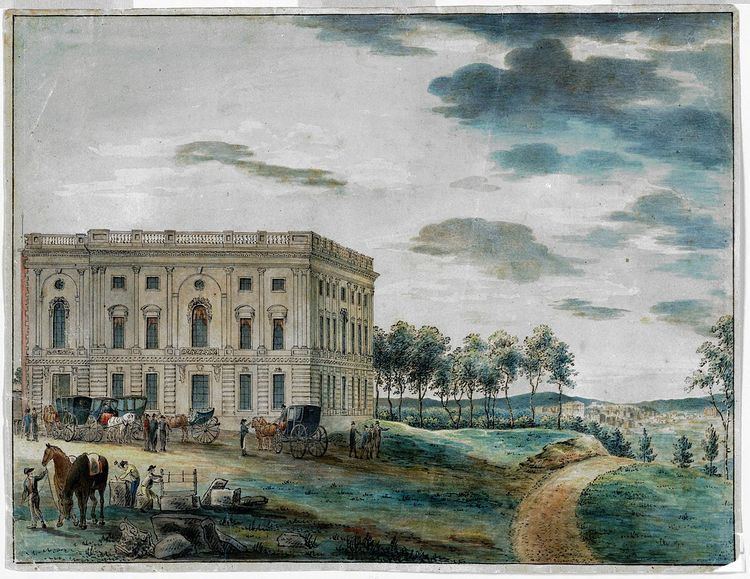House Majority: Democratic-Republican | ||
 | ||
Members: 34 Senators107 Representatives2 Non-voting members | ||
The Seventh United States Congress was a meeting of the legislative branch of the United States federal government, consisting of the United States Senate and the United States House of Representatives. It met in Washington, D.C. from March 4, 1801, to March 4, 1803, during the first two years of Thomas Jefferson's presidency. The apportionment of seats in the House of Representatives was based on the First Census of the United States in 1790. Both chambers had a Democratic-Republican majority, except during the Special session of the Senate, when there was a Federalist majority in the Senate.
Contents
Major events
Major legislation
States admitted
Party summary
The count below identifies party affiliations at the beginning of the first session of this Congress, and includes members from vacancies and newly admitted states, when they were first seated. Changes resulting from subsequent replacements are shown below in the "Changes in membership" section.
Senate
Although the Federalists had more Senators during the very brief March 1801 special session, by the time the first regular session met in December 1801, the Democratic-Republicans had gained majority control.
Senate
House of Representatives
Members
This list is arranged by chamber, then by state. Senators are listed in order of seniority, and Representatives are listed by district.
Senate
Senators were elected by the state legislatures every two years, with one-third beginning new six-year terms with each Congress. Preceding the names in the list below are Senate class numbers, which indicate the cycle of their election. In this Congress, Class 1 meant their term ended with this Congress, requiring reelection in 1802; Class 2 meant their term began in the last Congress, requiring reelection in 1804; and Class 3 meant their term began in this Congress, requiring reelection in 1806.
House of Representatives
The names of members of the House of Representatives elected statewide on the general ticket or otherwise at-large, are preceded by an "At-large," and the names of those elected from districts, whether plural or single member, are preceded by their district numbers.
Changes in membership
The count below reflects changes from the beginning of the first session of this Congress.
Senate
There was 1 death, 8 resignations, and 2 seats added for a new state.
House of Representatives
Committees
Lists of committees and their party leaders.
